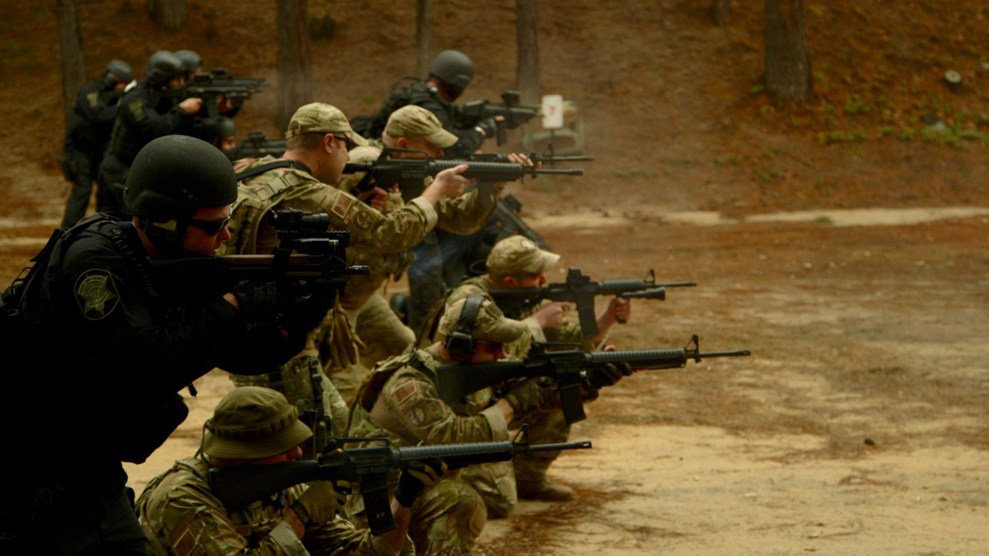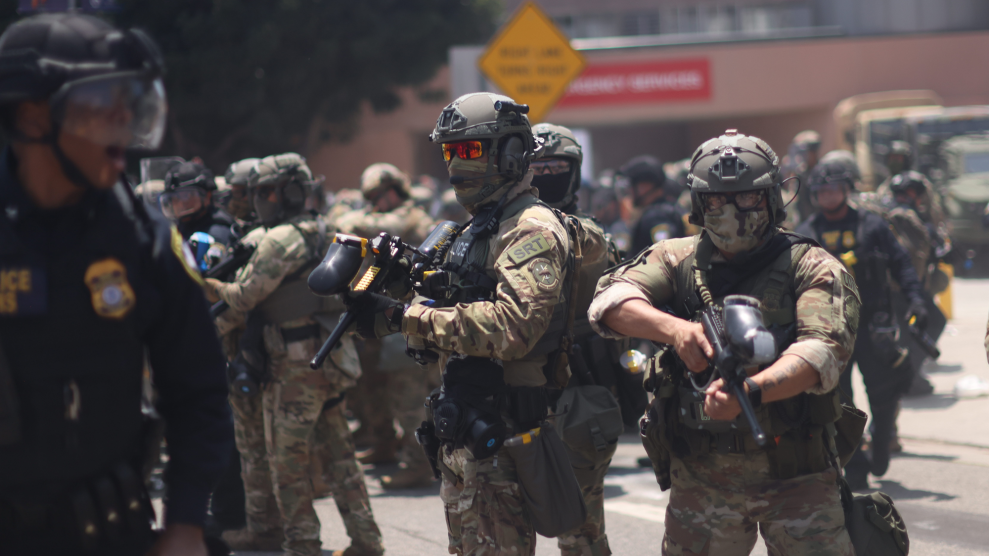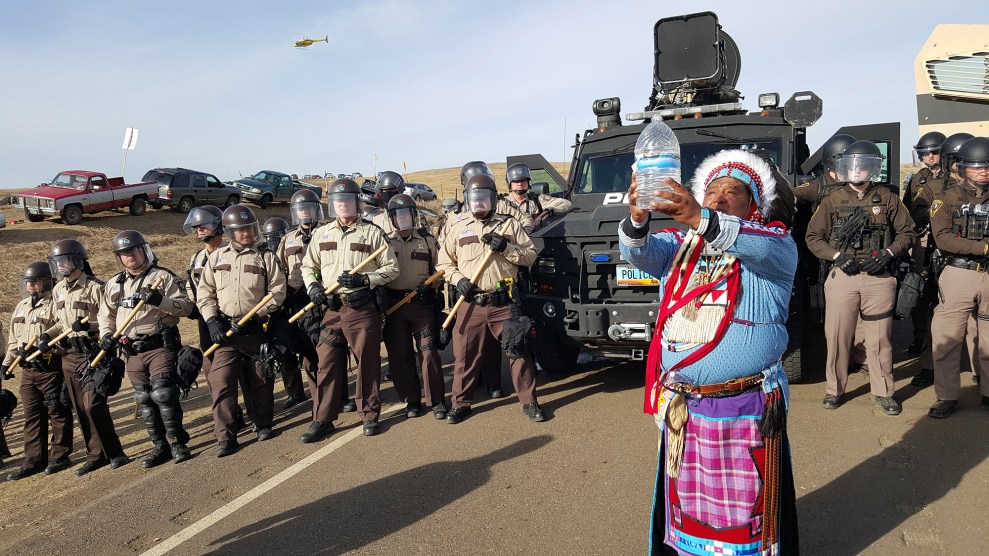
An anti-pipeline protester holds a bottle of water near police officers in riot gear.Wes Enzinna
Police tactics at the Dakota Access Pipeline protest grew dramatically more aggressive last week, with law enforcement using tear gas, rubber pellets, sound cannons, and other controversial methods to clear activists from a road and a nearby encampment. The latest clashes followed a complaint from Standing Rock Sioux Chairman David Archambault, who warned of an “overall militarization of law enforcement” at the pipeline protest and requested an investigation by the Department of Justice.
As tribal members and their supporters occupied a stretch of contested land directly in the pipeline’s path, dozens of police from six states, dressed in riot gear and equipped with armored personnel carriers, cleared the path of protesters, teepees, and in one instance, a horse. Amnesty International, which is monitoring the confrontation, criticized the response from the Morton County, North Dakota, sheriff’s department. “Confronting men, women, and children while outfitted in gear more suited for the battlefield is a disproportionate response,” a spokesman said. In total, 141 people were arrested.

Here are some of the aggressive police tactics I witnessed or heard about while observing the protests:
Tasers: Medic Noah Morris showed me this Taser barb, which he said he’d pulled from the cheek of a protester. An unknown number of other protesters were also tased.
This is a taser barb removed by medic from a #NoDAPL protestor’s cheek. #DAPL pic.twitter.com/6S1Qlzo4Jy
— wes enzinna (@wesenzinna) October 28, 2016
Rubber bullets: I watched police shoot shot-gun-style weapons at protesters on more than a dozen occasions. Morris, the medic, also showed me these rubber pellets, which he’d retrieved from a protester’s leg.
These are pellets shot out of shotguns by police at #NoADPL protestors. Retrieved from leg of protestor by medics. pic.twitter.com/5IrTYWJIGe
— wes enzinna (@wesenzinna) October 28, 2016
According to multiple sources including the Los Angeles Times and the BBC, protesters’ horses were shot at with rubber bullets. One horse’s legs were so badly damaged it had to be euthanized. This video shows a horse whose rider says its legs were shot.
Sound cannons: Long Range Acoustic Devices, which emit an ear-splitting whine, were used intermittently throughout the day. Some models can cause permanent hearing loss. A number of journalists, including myself, wore earplugs to protect ourselves, but many of the protesters did not have earplugs.
@UR_Ninja LIVE NOW: LRAD sound cannon used repeatedly on water protectors in North Dakota #noDAPL camp smack-down. https://t.co/O6hYJte0JQ
— Gillette (@RazorOCCUPYMN) October 27, 2016
Tear gas: Dozens of protesters were sprayed with tear gas for refusing to vacate the road they’d been blocking. Here are photos of two people I saw being tear-gassed for not moving out of the way quickly enough.
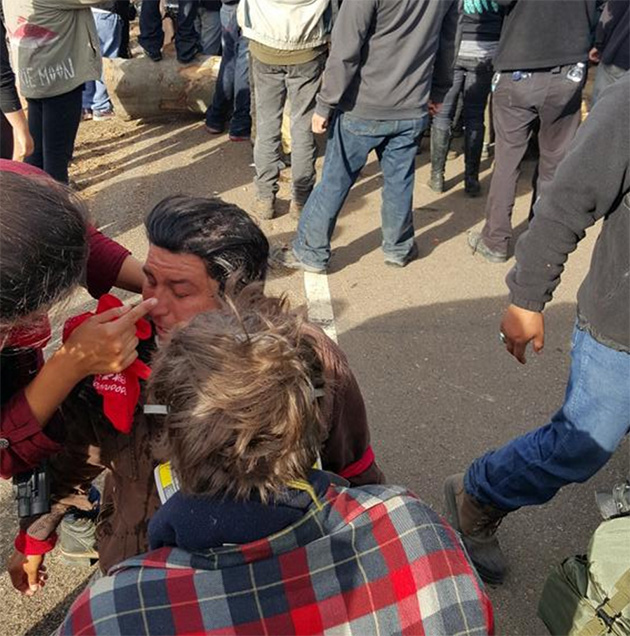

Drones: Though a no-fly zone enacted on October 25 forbids civilians and protesters from flying above the protest site, Morton County police and Dakota Access Pipeline employees flew drones over protesters. A helicopter owned by Energy Transfer Partners, the parent company of Dakota Access Pipeline, and a plane owned by Morton County have been seen flying over the Standing Rock Sioux Reservation and nearby protest camps.
Holding cells: According to the Los Angeles Times, “protesters…arrested in the confrontation had numbers written on their arms and were housed in what appeared to be dog kennels, without bedding or furniture.” Yet according to a statement I received from the Morton County Sheriff’s Department, it has held protesters in “temporary holding cells” while awaiting processing or transfer to other jails. The 10-by-14 foot cells are approved by the North Dakota Department of Corrections, and the sheriff’s department says inmates have access to “bathroom facilities, meals and drinking water.”
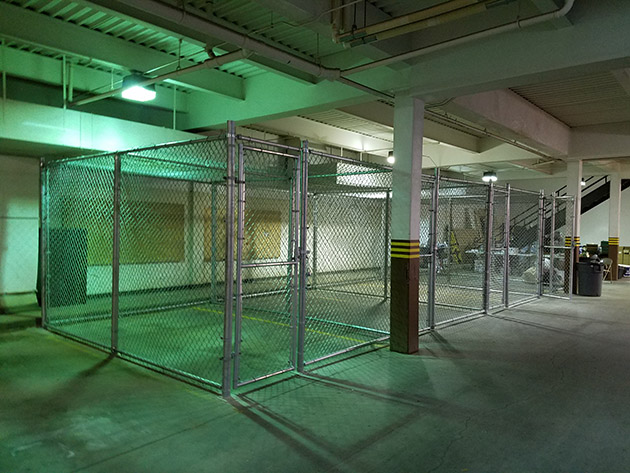
For more scenes of last week’s protests—and the police equipment and tactics deployed against them—watch this video by the media collective Unicorn Riot:

